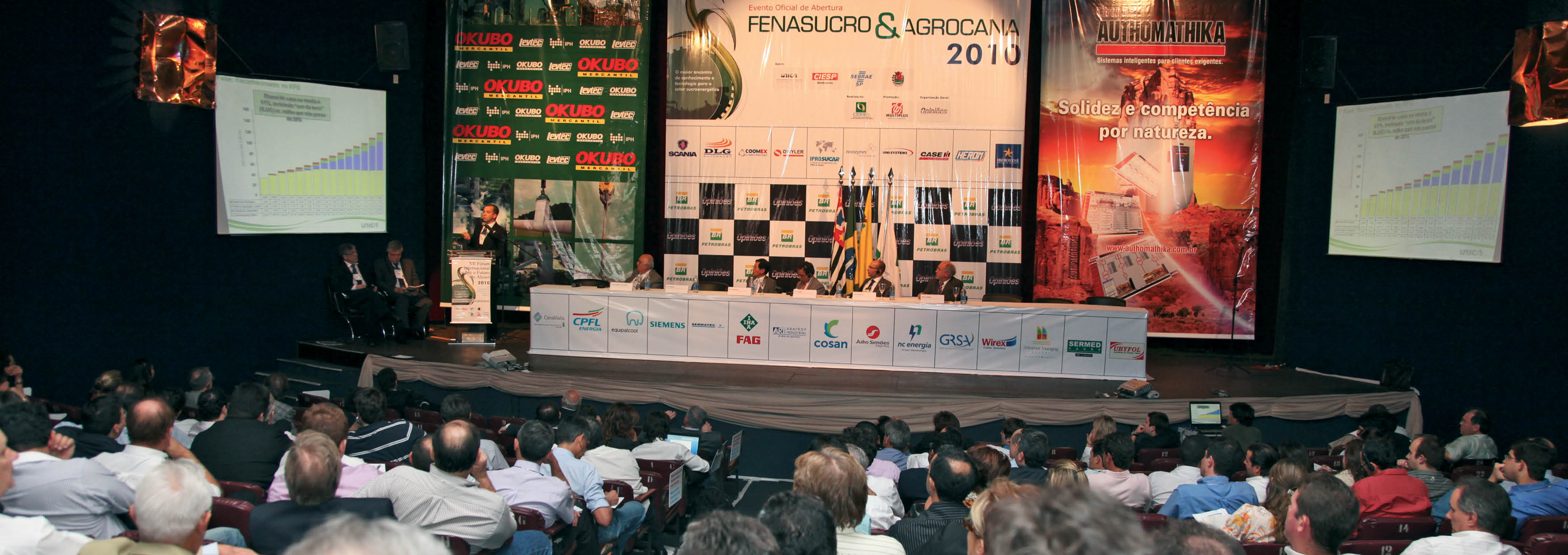Joel Velasco
Chief Representative of Unica in North America
Op-AA-26
Ethanol in the United States
The target of the initial phase of our work in the USA was to publicize knowledge of ethanol made from sugarcane, creating a distinguishing factor between it and the ethanol produced from other raw materials, while taking into consideration the federal and state laws of the USA. The second phase, in which we are now, is to seek to reduce the tariff barriers in the USA applicable to our ethanol, in what is truly a battle against subsidies and protectionist tariffs.
The US gasoline market is the largest in the world, with current consumption in the magnitude of 520 billion liters. Ethanol consumption represents 9% of gasoline consumption, i.e., around 50 billion liters – twice as much as in Brazil –, already very close to the regulatory limit of 10%. Ethanol production and consumption have increased greatly, due to three policies.
First, between 2004 and 2005, the reduction in the use of MTBE, an oxygenant additive to gasoline viewed as cancerous, creating a huge market for ethanol. Next, the second phase took place when UNICA was beginning to enter the field in the United States, and ethanol consumption became mandatory – the famous RFS (Renewable Fuel Standard) requirement, which determined that the country consume an increasing annual volume, expected to reach 136 billion liters in 2022.
The third factor was arbitrating the gasoline price in light of the ethanol price, regardless of whether the ethanol is produced from corn or sugar, and which has been considerably reduced. Based on the dynamics of this market, we began our work at UNICA, and it consisted of two well-defined phases. The first, which has almost been concluded, is what one may refer to as seeking recognition for sugarcane ethanol.
We started out, trying to understand and working according to the federal legislation mandating minimum consumption of biofuels, involving ethanol made from corn, cellulosic ethanol and advanced fuels – which is where first generation sugarcane comes onto the stage, as well as renewable diesel.
We did our work and were able to get the EPA to attest that ethanol from sugarcane, in the United States, causes greenhouse gas (GHG) reductions of at least 61%, in comparison with gasoline as used in the USA. Ethanol from corn, according to the EPA’s own calculations, achieved a reduction classification below 20%.
This showed that ethanol from corn can only reach the set limit of the conventional class of ethanol, with a well-defined growth limit, which currently is 45 billion liters, reaching 57 billion in 2015 and remaining at this level thereafter. What we were able to prove is that first generation ethanol from sugarcane is better than cellulosic ethanol, which, in turn, has an established minimum reduction target for GHG of 60%.
The biofuel industry as a whole must acknowledge that there is a difference between ethanol from corn and ethanol from first generation sugarcane, now viewed as advanced fuel, expanding the limits for its use. To give you an idea of what this represented, the size of the market for advanced fuels under the minimum consumption mandate (encompassing cellulosic ethanol, biodiesel from biomass and advanced fuels, which is where we fit in) will be of approximately 58% of total consumption, i.e., 79 billion liters.
The US system will not allow just any biofuel to enter its market. The acknowledgement by the EPA makes an enormous difference. So, in what direction will investments go? For instance, how can this affect the investments of, say, a company like Shell? Another important issue UNICA is working on with the corn industry in the USA is what we refer to as the Mixture Barrier, which deals with the limit of ethanol to be added to gasoline.
We are asking the EPA to increase the 10% (E10) to 15% (E15). In coming months we may have an E11 or E12, but what is most important is to signal that there is room in the gasoline market for ethanol. Without this, there is no sense in producing more ethanol in the United States, because there is no place to store it.
One could sell it as E85, but that’s a separate discussion, because E85 will never be competitive in the USA at the price of gasoline, bearing in mind that there the liter costs 91 cents. So, there is no way of producing a product with a similar energy quality. Another aspect of our effort at succeeding was the Californian program. California’s energy policy is one of the most advanced in the USA.
They have a program aimed at reducing the level of carbon in fuel by 10% by the end of the decade. California is almost one Brazil. They consume almost 60 billion liters of gasoline per year and in terms of E10 alone that would amount to 6 billion liters of ethanol. We worked hard for several years, with academics at Esalq, Unicamp and other institutions, to show that ethanol from sugarcane achieves a significant reduction.
There, we so far have been able to prove that ethanol from sugarcane achieves a 40% reduction in GHG. An interesting aspect was that UNICA had to defend the State of California when the oil refinery and the corn industries were suing the State in the courts. I never thought I’d have to defend Schwarzenegger in a fight.
Our strategy now is to keep the pressure on the US Congress to reduce the import tariff from US$ 0.54/gallon and make sure it expires at the end of this year. Our message is quite simple: ethanol from sugarcane is clean fuel, renewable, and it reduces the US’ dependence on oil, at a competitive price for the American consumer.
The ethanol from corn lobby in the House knows it will be difficult to sustain a subsidy in the magnitude of US$ 6 billion per year, mainly considering the very American fiscal deficit. They argue they would lose 160,000 jobs, but since this is an election year, protectionism and nationalism may continue to foot the bill. All major newspapers in the United States, like the New York Times, Wall Street Journal, Washington Post, and Chicago Tribune, in editorials, have voiced being in favor of doing away with these subsidies.
The corn lobby is divided on basic positions related to “flex” fuel cars, the fuel mix, etc. Our strategy is to demand competition. We want the market that lets oil from the Middle East enter the country tariff-free, to acknowledge the benefits of ethanol from sugarcane and to abolish the fee of almost 30% on imported ethanol. The legislative window is closing in the USA.
There will be elections in November and it is likely that consensus will have to be reached on the issues’ agenda for the voting. We have four options: either they let the deadline expire – which we want; or the term could be extended – either as it is or in a different format; or they can create import tariff parity in relation to their subsidy – reducing the import tariff just a little bit; or create a completely new program. In by opinion as a backstage player, the Congress will tend to renew the tariffs, the calendar allowing.
They can reduce subsidies on domestic ethanol, but all this would be over in about one year. I don’t want to imply that the tariff will be eliminated by the end of the year, but I do wish to emphasize that the tariff never before was left to be renewed so close to the end of the year. On previous occasions, it was renewed two years in advance. Another aspect is that the debate in the USA is more sophisticated: nowadays it is accepted that it would be political madness to impose tariffs on cleaner ethanol.
I am optimistic about the biofuel market, but I do have reason for concern. If we think only in terms of the US market, we can envision a huge international demand. I believe the demand in the USA will be somewhere between 5 and 15 billion liters of ethanol from sugarcane by the end of this decade. If the oil price or the price of ethanol from corn goes up, the trend will be to settle closer to 15 billion. The question is whether we are getting prepared for this.
The investment for expanding the industry and the infrastructure needs to be made as quickly as possible. We cannot only think about this when the demand arises, even because to be prepared is essential to who, on the outside, is watching this scenario. The time has come to believe in the industry, stand firmly on the ground and begin to invest, otherwise we run the risk of simply not achieving our objective.





